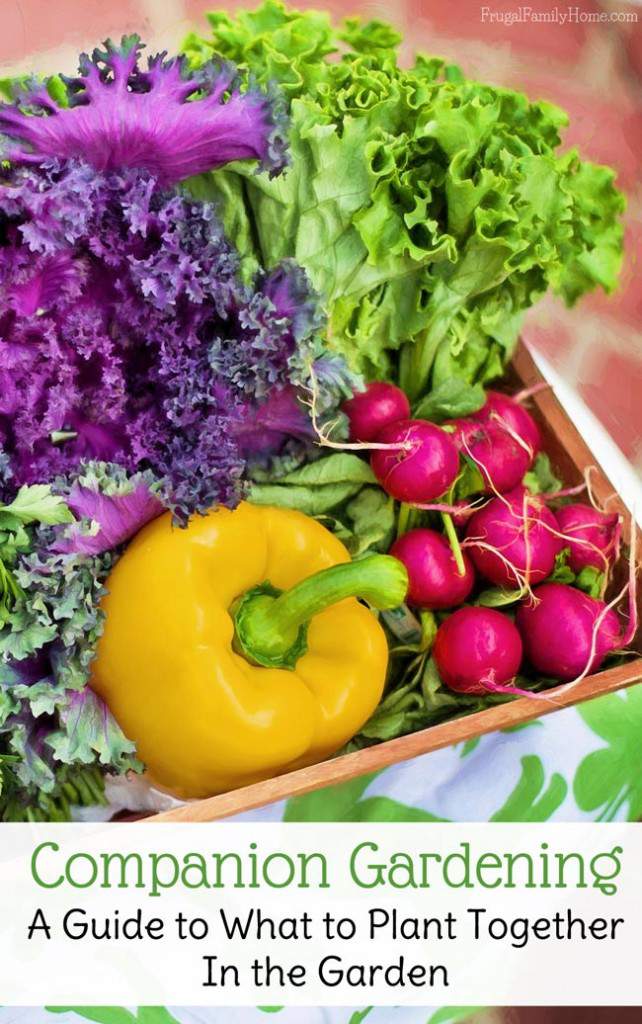Plant with a Companion Plant Guide to Help your Garden Thrive
Growing a garden takes so many things. It takes a good location, good soil, the right plants for your climate, and the right planting plan.
I know in our backyard garden I always have to plan right where my plants are going to be growing in the garden, for just the right amount of sun and other things the plants need.
Did you know there are some plants that will grow better near one another? I learned about companion planting a few years ago and it can really help your plants to thrive.

If you haven’t heard about it before I’ve got a guide to get you started knowing what plants to avoid planting near one another and which ones like each other. We all want to have a great gardening season and get the most out of our backyard gardens and using a companion planting guide can help ensure your plants get what they need.
Did you know that planting marigolds in the garden can deter pests? I know my mom always planted marigolds in our flower beds and close to our garden. I never really knew why I just knew I didn’t like them. I always thought as a kid why can’t we have prettier flowers than these around our home?
But since then I’ve learned that having marigolds in the vegetable garden can help deter bugs like aphids, potato bugs, squash bugs, and bean beetles. They also can help stimulate the growth of vegetables too. While they aren’t the prettiest flower you can grow they are very beneficial.
Nasturtiums are another flower that repels aphids, squash bugs, and some beetles. These two flowers are natural pest deterrents. Having a few of these flowers as companions for the vegetables in each of your garden beds can help you keep the pest down naturally.
Also, some plants just don’t get along too well so it’s best to keep them away from one another. In the companion plant guide printable I’ve made a chart of what to plant with each of the common backyard garden vegetables and what to avoid for each of them.

Just a Few Companion Plant Combinations
Did you know that sunflowers grow well alongside cucumbers but don’t like potatoes? Wonder why they don’t quite get along.
Carrots get along with pretty much any plant but don’t plant them near dill. I wonder if it’s because the leaves are similar or the seeds look similar to each other?
Beans don’t like to be near onions, leeks or garlic. But are happy alongside strawberries, carrots, cucumber, cabbage and a few more plants.
Peppers grow well with tomatoes and basil. I’ve actually grown basil, tomatoes, and pepper near one another and they all did really well. Especially the basil it grew as big as a small shrub.
Get the Printable Companion Plant Guide
You can get the companion plant guide by clicking the button below. When you subscribe to the garden updates email list you’ll get the companion plant guide for free. Don’t worry you can unsubscribe at anytime.
Knowing what to plant where in your backyard garden can make a difference in how well your vegetables grow. Because we all know that gardening can be tough sometimes. With the bugs, the unpredictable weather and the different varieties performing differently, you need all the help you can get to have a successful garden. Companion planting is one of the ways you can help keep the odds more in your favor and keep your plants happy.
I use this companion plant guide to help me lay out my garden, I make sure to group plants that are good buddies together and keep the plants that don’t play or grow nicely together separated. I can also incorporate a few of those flowers and herbs that help deter bugs into my garden to put up an extra layer of protection to my vegetables. Every little bit helps.
While this is just a guide you might find some combinations work better in your garden than others. Companion planting isn’t a science but it can be a guide to help you grow a more productive vegetable garden in your backyard.
Growing Tomatoes Try One of These Two Planting Methods to Get them off to a Good Start,
How to Plant Tomatoes, Deep Planting
How to Plant Tomatoes, Trench Planting
How to Grow Sweet Strawberries
Get the Companion Plants List
When you join the gardening email list, you'll not only get gardening tips sent to your inbox, you'll also get the companion plants list too.


It’s so interesting that certain plants grow well together while others don’t. The companion plant guide is a great idea, Shelly. 🙂
I can’t access the Companion Gardening guide.
Lucille, After you enter your email address you’ll receive an email with a link to access the guide. Be sure to check your spam folder as sometimes it can end up there. Let me know if you didn’t receive the email.